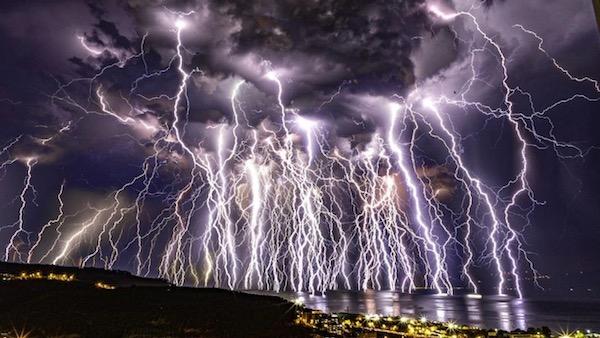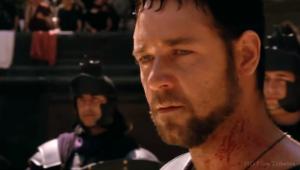Rain's Gonna Fall: How to Protect Your AV Gear from Severe Storms

To spice things up a bit I thought I'd resurrect a subject I've addressed before: the upcoming and always bad fun weather season. Those of us living in hurricane alley should always have a plan to protect our AV gear, but even those rarely touched by tropical cyclones need to remain aware of how nasty weather events can ruin electronics equipment. We’re talking tornados, floods, milder (but still dangerous) thunderstorms, and even earthquakes if you live in a seismic zone
I'm fortunate (or unfortunate) enough to have lived in both Florida and California. I’ve faced endless thunderstorms and at least one hurricane in Florida from which I evacuated before it hit (fortunately it wasn't severe). I also once experienced ground tremors in California — not damaging, but both felt and seen as the ground in a parking lot appeared to visually oscillate like waves on the ocean.
Personal Safety First
Your first concern in any such event, of course, should be your family and your home. Button up the home as best you can, possibly even with sandbags if and where needed. Always have a go-bag full of stuff you'll need in an emergency, particularly if you have to evacuate. Keep the family phones charged up to make contact if and when you're separated, but be aware that in a worst-case scenario cell service might be down.
Have ample flashlights and extra batteries for them. A battery-operated radio might also be a smart investment. And fill up your car's gas tank early enough to avoid the inevitable crowds. How an EV would fare in that situation, particularly on a long trip with the availability and status of EV recharging stations in doubt, is currently an open question. But if power fails you might not be able to top off with gas either (the pumps run on electricity) but at least you'd have a better chance of finding an operating gas station.
If you live in a hurricane prone area you might also want to consider shatter-proof windows for your house, though they can be very expensive (and I admit that I don't have them). And if you have solar panels on your roof, check with your insurance company. It's very possible that your homeowner's policy won't cover the panels (at least not without a hefty surcharge), and likely not your roof shingles either. Hurricane force winds can rip off both the solar panels and any roof shingles under them.
Now, Let’s Talk Electronics
Only after personal safety is taken into account would it be time to turn to the survival of your home theater and/or music system. While most audio/video gear isn't priced at Picasso or Dali levels (though some high-end components seem to be trending that way!), it's likely that the total cost of your home theater system is more modest than that. But you certainly don't want to see it damaged or destroyed, or have your insurance agent look at you cross-eyed when you make a claim for a big-screen TV or AV component after a damaging storm!
The most common risk factor most of us will experience is from lightning strikes. Lightning can be catastrophic, even if the strike doesn't hit your house directly. According to an article on Mutual Assurance.com:
In western Virginia, a homeowner installed an invisible fence system to contain her golden retriever. During a lightning storm, a bolt struck the ground in a next-door neighbor's yard. The current traveled through water in the ground and was absorbed by the wiring used in the invisible fence. That current then traveled into the home, frying TVs, stereo systems, the AC unit, appliances, and more. The total cost to repair the damage was well into five figures. Lightning can [also] strike up to 2 miles away and travel through underground streams and water pipes into your home.
The same article also cautions that reinforced metal structures in your home (including reinforced concrete floors!) can also pick up and transmit surges from a nearby lightning strike. And most new houses these days are built on concrete slabs with no basement.
While there's no certain prevention for such potential damage, the best solution is to manually unplug any device you wish to protect when a storm threatens (or if you'll be out of town). Simply turning off the gear is no guarantee; a powerful surge can easily jump across the gaps in most on/off switches and reach the component(s) at risk. When a storm threatens my area I unplug everything I want to protect, both the devices I own and those in-house for review.
I also unplug the HDMI cables that might come from a seemingly innocent device, such as the powered cable-box connected via HDMI to my television. Yes, unplugging the cable box itself would accomplish the same thing. But when a storm is near I sometimes connect the cable box to an old, cheap, LCD TV so I can get current weather reports (lightning storms can also spin off tornadoes, so it's important to know what's happening in your area). If the cable box itself then gets fried, the cable company will replace it, but they won't cover anything to which it's connected apart from perhaps your router. If the cheap TV gets fried, the loss isn't devastating. But if you own a premium TV or projector (perhaps both), be sure to unplug it for protection.
My disconnect drill includes unplugging two projection screens. I live in fear (or at least concern) that one or both screens might be damaged when fully or partially partly extended and then be unable to retract or fully extend. And repairing my screens would be impractical since they're 2,000 miles or more from where they were made and presumably would need to be serviced. This would result in eye-watering, two-way shipping and repair costs, not to mention the nuisance of taking them down from the ceiling and reinstalling them later. The best approach in a storm is to ensure that retractable screens are fully retracted and then unplugged.
If you're just building a new home theater, make sure AC connections for all of your gear are easily accessible, or are connected to one or more accessible devices for easy, manual disconnection. If you use multi-plug devices make sure they can safely handle the full load of the components connected to them. And don't rely on a power conditioner or other similar, multi-plug device to block a lightning surge. It might help, but the only certain deterrence, or at least as certain as possible (with electrical surges there are no guarantees), is to manually disconnect each component from AC power.
And always unplug your gear before the storm gets close. You don't want to be handling power cords and their connections when the storm is closer than 2 miles away! But how do you know the distance? The initial lightning flash is almost instantaneous, the rumble comes later. Sound travels at roughly 1,000 feet per second, so 2 miles are about 10,000 feet (I'm rounding off here). So if the flash and the rumble are less than 10 seconds apart, the lightning is likely closer than 2 miles away. But if it's a severe storm there may be several strikes close together, making it impossible to separate them out to estimate distance. But hopefully you've done your disconnect chores well before that.
This tome has run on long enough for now, but thunder and lightning are clearly the most common risks most of you will encounter. I'll cover the other risks in my next blog. Stay tuned.




























































